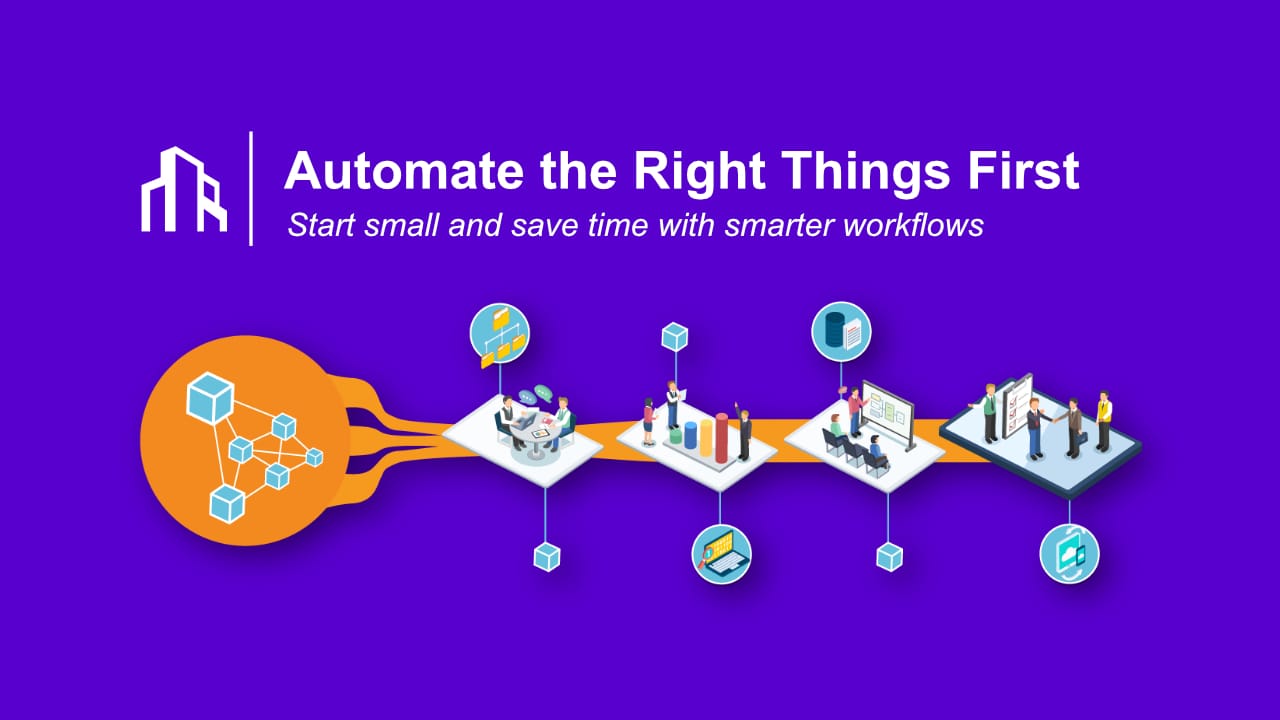What to Automate First in Your Business (And What to Leave Alone)

If you run a small business, you’ve probably heard it a hundred times: “You should automate that.” Emails, invoices, reports, follow-ups, everything sounds automatable. But when you try to start, it quickly becomes confusing.
Where do you begin? What’s worth automating, and what’s better left alone?
The truth is, automation works best when it’s focused. Instead of trying to automate everything, you get faster wins by tackling the small, repetitive tasks that quietly eat your time every day.
The rule of thumb: frequency beats complexity
Here’s the simplest way to think about it:
If a task happens often and doesn’t need judgment, it’s ready for automation.
If it’s something you or your team repeat daily or weekly and it’s the same every time it’s low-hanging fruit. If it involves creative thinking, negotiation, or a client touchpoint, keep it manual (for now).
Let’s go through the top five areas where automation delivers quick wins and a few where it’s better to stay human.
1. Employee or client onboarding
Why it works: Every business repeats onboarding whether it’s a new hire, a client project, or a subscription start. The steps rarely change: send documents, set up accounts, share welcome materials, assign tasks.
What to automate:
- Sending welcome emails and access info
- Creating project folders and CRM entries
- Triggering checklists in Airtable, ClickUp, or Notion
What to keep manual:
Personal introductions. They set the tone no workflow can replace a genuine “Welcome aboard.”
Quick example:
A digital agency automated onboarding through Make.com: when a deal in Pipedrive moved to “Won,” the system automatically created a project in Airtable, invited the team on Slack, and sent a client welcome email. Setup time dropped from two hours to ten minutes.
2. Invoicing and payments
Why it works: Money flow depends on consistency, not creativity.
Invoices, reminders, and receipts follow the same structure every time.
What to automate:
- Generate invoices from completed projects
- Send them automatically after milestones
- Trigger reminders for unpaid invoices after 7 or 14 days
What to keep manual:
Custom quotes or negotiations. Those still need personal attention.
Result:
Automating billing saves not just admin time it improves cash flow. Clients pay faster when they don’t have to wait for paperwork.
3. CRM updates and follow-ups
Why it works: Keeping your CRM up to date is essential, but it’s also the first thing teams forget when things get busy.
What to automate:
- Add new leads from forms or emails
- Update status after a deal moves in your pipeline
- Send follow-up reminders after a call or meeting
What to keep manual:
Writing personalized follow-ups or proposals. That’s where relationships are built.
Quick win example:
A consultancy automated CRM updates using Make.com. When a form submission came in, the lead was created in Pipedrive, tagged, and added to an email sequence. No more missed opportunities and the sales team could focus on actual conversations.
4. Reporting and performance tracking
Why it works: Reports take time and offer zero creative joy.
They’re a perfect candidate for automation because the data already exists it just needs to be collected and presented.
What to automate:
- Weekly revenue summaries from Airtable or Sheets
- Team performance dashboards
- Marketing metrics like lead source or campaign conversion
What to keep manual:
Analysis and strategy. The numbers tell the story, but it’s still up to you to decide what to do next.
Tip:
Automate your reports to land in your inbox every Monday morning. You’ll start the week informed without lifting a finger.
5. Customer support follow-ups
Why it works: Quick, consistent responses build trust and automation keeps that consistency without sounding robotic. Simple follow-ups, satisfaction checks, or reminders can run on autopilot while still feeling personal.
What to automate:
- “Thank you for your message” emails
- “Was your issue resolved?” follow-ups
- Internal Slack alerts for new support tickets
What to keep manual:
Any message that requires empathy, apology, or custom help.
Automation should open the door, not close it.
What not to automate (yet)
Some tasks look tempting but often backfire when automated too early:
- Negotiations or price discussions
- Creative content creation (without review)
- Client relationship management
- Anything that involves emotional tone or discretion
Automation isn’t about replacing people it’s about removing friction so your people can do better work.
Start small, test, and expand
The key is to build confidence. Don’t try to automate your entire business this month. Start with one process that annoys you daily. Once it works smoothly, add another. Over time, you’ll have a system that runs 80% of your operations quietly in the background.
Remember: good automation should feel invisible like it was always meant to be there.
Need help deciding where to start?
At Scalevise, we help growing businesses find the right entry points for automation without complexity or expensive software stacks. We map your workflows, identify quick wins, and set up reliable automations using platforms like Make.com and n8n.
If you’d like a quick review of what to automate first in your business, reach out through our contact page. A short conversation could save you weeks of trial and error and help you start automating the right way.
